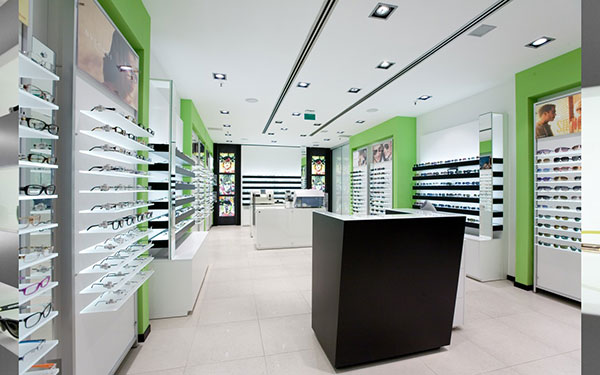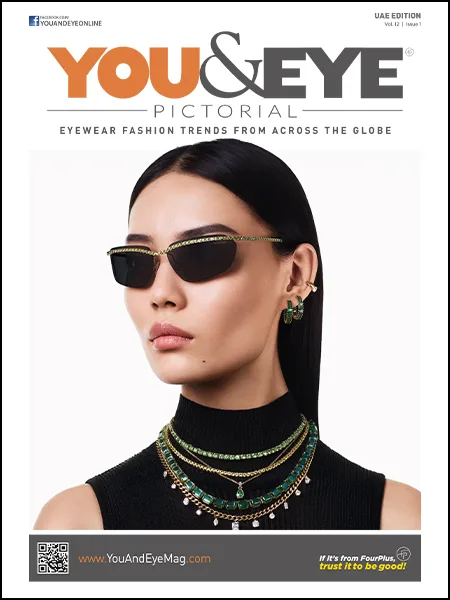Do you get confused when you walk into an optical store about simple things like who to consult for an eye test and who do I ask about the latest fashion? It’s not rocket science but some of us do need a little help. Here’s a quickie on how to get the most from your visit to an optical store.
 How does one recognize an optometrist from the salesperson?
How does one recognize an optometrist from the salesperson?
In some optical stores, optometrists or Eye Care Practitioners (ECPs) are visibly noticeable in their white coats and usually wearing their license card or ID’S for easy recognition. ECPs act as the recipient of the most escalated queries like visual examination procedure, contact lens fitting and aftercare, specialized treatment and their recommendation is most valued as they are subject matter experts in the area of vision care. Salespersons serve as the front liner who lay out all the possible choices the optical store offers.
Who should one consult first – the optometrist or the sales person?
As a norm to any organization there is a hierarchy inside the optical shop, the sales person are the front liners whom at first hand get in touch with the patient. To give the best first impression, salesperson are trained and equipped with product knowledge, proper handling of customer’s requirements and will basically advise the next step if an eye test needs to be done. They will gather all the queries and the Optometrist will proceed. The expertise and recommendation will come from the optometrist. In short they both work hand in hand consultation wise “basics” from the sales person and an “upgrade” from the Optometrist.
Who is a better person to consult regarding features of the different types of lenses – an optometrist or a salesperson?
As they work hand in hand, both have common information regarding various choices in lenses and their features. From the salesperson point of view their responsibilities include presenting choices and providing patients the information about the features in the wide range of selection that’s available today. From the optometrist’s side it is his job to advise the patient about the application of the features based on the diagnosis of vision and the eye test results. Optometrist guides the patient to the best lens while the salesperson gives an idea by laying out all the possible choices. One can be found to be technically higher than the other but both are essential.
How does one assess if the store provides state-of-the-art facilities and proper refraction?
Competitions in optical business are getting higher and growing. Investing in a state-of-the-art facilities for refraction is done by all stores today. Upgrading the facilities can be useful in attracting and convincing more customers and will possibly be considered as a prerequisite to being a reliable vision care provider.
Every patient would consider fast, concise and convenient services as is the trend today, due to modernisation, in every field. But the essence of proper refraction is how the available tools and instruments are used. It is vital that the health of the outer eye is examined through a slit lamp and the fundus or the inner eye must be viewed by an ophthalmoscope to check underlying conditions which are sometimes asymptomatic.

When it comes to contact lens prescription should one get his eyes checked on every visit or one should ask for a refill?
It is recommended that a contact lens wearer should get his or her eyes checked every 6 months. However the best time to check the cornea, tear film, conjunctiva and compliance is whenever you refill your stocks, even if it is within the 6 month period. A regular eye check-up by an optometrist will ensure long term healthy contact lens wear.
When it comes to prescription lenses what criteria should one go by – price, features or brand?
You are advised to choose a prescription lenses based on the criterias in following order :
1. Features : This is the first consideration as it has to match your prescription and purpose of why you need vision correction.
2. Price : As price also means quality, invest in the best lens that suits your budget.
3. Brand : From the wide array of choices you have today, get the best feature from a trusted and well known brand. However make sure you compare the price.
For sunglasses, what kind of UV protection should one ask for?
Market research shows that 90% of the patients are aware that UV rays in the sun damages their skin but less than 10% knows that it may damage their eyes as well.
There are three features patient should assess in choosing sunglasses :
- Coverage
- Optical Quality
- UV protection
UVC Rays (wavelengths of 100-280 nanometer) : The ozone layer is known to block all UVC rays but the depletion of the ozone layer has raised concerns and this could be a cause of serious UV related health issues.
UVB Rays (wavelengths of 280-315 nanometer) : These are partially filtered by the ozone layer but they do end up reaching the earth’s surface and they are known to cause photokeratitis (a painful inflammation of the cornea) and are thought to help cause pingueculae and pterygia, which can cause corneal problems as well as distorted vision.
UVA rays : These rays have lower energy than the UVB and UVC rays but they can reach the lense and the retina inside the eye by passing through the cornea. Amongst the suggested effects of overexposure to UVA are cataracts and macular degeneration.
The harmful effect of UV radiation may not be immediate and are delayed by years but prevention should be practised early by using available choices. Hence sunglasses offering complete UV protection are a must especially in the Middle East where exposure to harsh sunlight is almost continuous.

What kind of after sales service can one expect from an optician?
Below are some after-sales service provisions one must expect from an optical store:
Free Cleaning of Eyewear – spa glasses for free dip in a cleaning machine which removed stubborn dirt making glasses sparklingly new.
Servicing of Generic Parts : These include nose pads, screws and tips which are available in store as replacements.
Free Adjustment : As part of a normal wear, eyewear sometimes become loose and alignment and tightening are required to ensure comfortable wear and this adjustment is a service that an optical store provides.
Warranty Service : This covers the spare parts replacement for branded items. Sometimes the replacements do take time as the original replacements might have to be shipped from the parent company.
Follow Up : This means that the optical store is responsible for whatever they prescribe. For all the service and the products that an optical store provides to you, if there is any area of dissatisfaction the optical store is answerable to all your queries and follow ups regarding the product or service.
Flexible Refund and Exchange Policy : Based on the government regulations as well as an internal store policies, every consumer is provided a refund or exchange policy. This may vary from organisation to organisation but it is something that as a consumer you should be well aware of while making your purchase.
– (With inputs from Azza Hussain of Kefan Optics)



